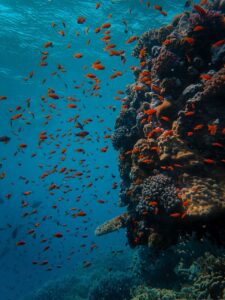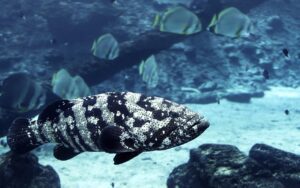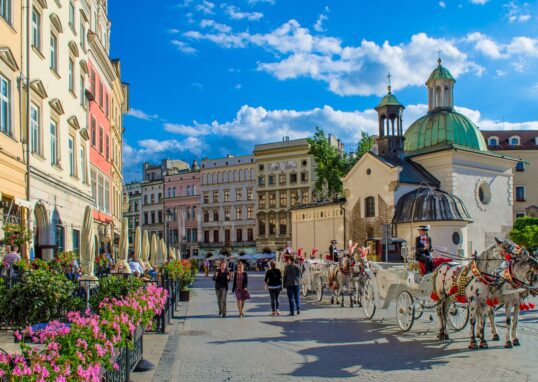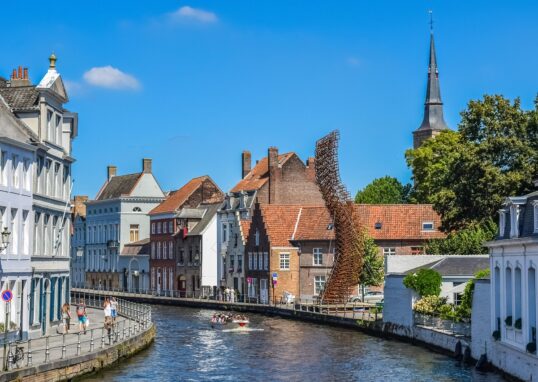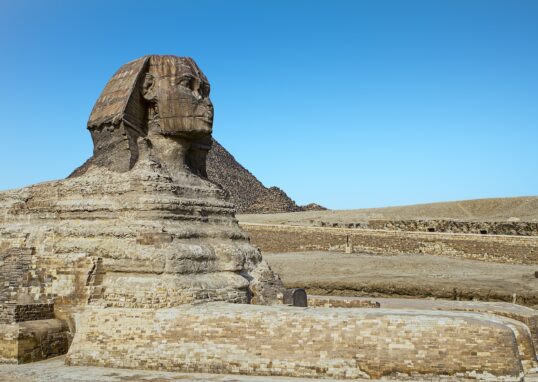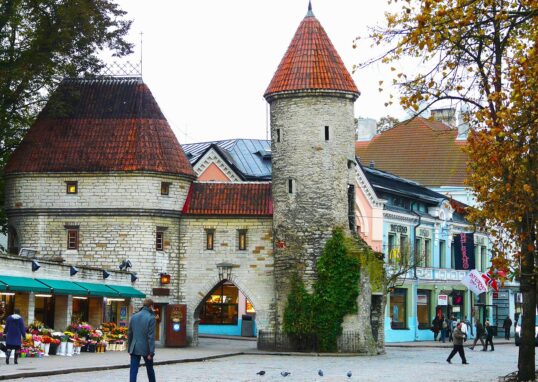
Belize Barrier Reef – A Natural Wonder of the Caribbean
The Belize Barrier Reef is the planet’s most beautiful and priceless natural attraction. It stretches along the coastlines of Belize, a tiny but beautiful nation in Central America. It is the planet’s second-largest coral reef system after the Great Barrier Reef in Australia. It stretches over 300 kilometers (190 miles) along the Caribbean coast of Belize and covers an area full of the vibrancy of sea life. The reef is part of the Mesoamerican Barrier Reef System, with extensions through Mexico, Guatemala, and Honduras. This large underwater system contains many thousands of marine organisms and provides food, shelter, and livelihood for many communities. Belize’s Barrier Reef is not just lovely. It is also a UNESCO World Heritage Site, recognized as having global ecological importance. Visitors, scientists, and divers from across the globe make their way to Belize to explore this underwater paradise.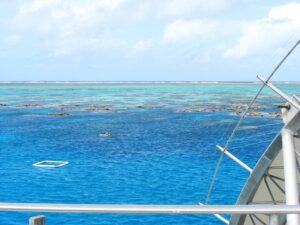
History and Discovery
The history of the Belize Barrier Reef goes back thousands of years. Coral reefs take centuries to develop. Coral polyps are tiny marine animals that build limestone skeletons, which over the years accumulate and form gigantic coral structures. Over the years, the structures expand and spill over, developing into the reef we know today. European explorers first referred to the reef in the 16th century. Early sailors dreaded the coral formations because they rendered navigation hazardous. Numerous ships ran aground on the corals’ sharp structures. With time, however, people came to realize the significance of the reef.
Scientists started studying the reef in-depth in the 20th century. The Belize was listed as a World Heritage Site by UNESCO in 1996. It is made up of seven protected areas, such as Glover’s Reef Marine Reserve, Lighthouse Reef Atoll, and the Great Blue Hole. But their impact is felt on the reef. Thankfully, Belize has made strong efforts towards its conservation. Nations removed the reef from the “In Danger” list in 2018 after banning oil drilling in the vicinity of the place and improving conservation laws.
Geography and Structure
The Belize Barrier Reef is divided into several segments, each with various features. It comprises three major atolls, many small islands called cayes, and massive coral growth.
The Atolls
There are three main coral atolls of Belize:
- Turneffe Atoll – Belize’s biggest atoll. It has mangrove forests, lagoons, and fish-filled channels. Divers love to cruise through its shipwrecks and coral gardens.
- Glover’s Reef Atoll – Renowned for its crystal-clear water and varied marine life. It is a popular destination for snorkeling and research.
- Lighthouse Reef Atoll – Renowned for the Great Blue Hole, one of the greatest dives on the planet.
The Cayes
The reef also has more than 400 cayes (referred to as “keys”), which are tiny sandy islands. Some are populated, while others are pristine natural environments.
Other cayes that are frequented by visitors are Ambergris Caye, Caye Caulker, Half Moon Caye, and Long Caye. They offer a mix of relaxation, activity, and justifiably stunning sea views.
Marine Life and Biodiversity
The Belize Barrier Reef is one of the most biologically diverse ecosystems in the world. It is home to more than 500 species of fish, 100 coral species, several species of turtles, marine mammals, and sea birds. Multicolored reef fish such as parrotfish, angelfish, butterflyfish, and groupers zip in and out of the corals. Larger species such as nurse sharks, reef sharks, stingrays, and manatees inhabit it. It is also breeding grounds for endangered species such as the hawksbill turtle and West Indian manatee. Seagrass beds and mangroves along the reef are supportive of this as well. They provide young fish with shelter and help ensure the stability of the shoreline. Between the winter months, tourists can also see whale sharks, particularly off the coast of Gladden Spit Marine Reserve, and hence Belize is a globally renowned destination for diving.
Things to Do in the Belize Barrier Reef
There are innumerable things to do for tourists who would like to experience this tropical paradise. Adventure-seeker or relaxation-seeker, this reef has something unique to offer everyone.
Snorkeling and Diving
The best activity is snorkeling or diving. Crystal clear waters, gardens of coral in full color, and thousands of fish make each dive irresistibly marvelous.
Best dive spots are:
- The Great Blue Hole – A massive underwater sinkhole, over 300 meters wide and 125 meters deep. Divers come from all over the world to dive within its limestone formations and inhabitants.
- Hol Chan Marine Reserve – Located near Ambergris Caye, this reserve holds coral walls, tunnels, and sea turtles.
- Shark Ray Alley – Visitors can swim with nurse sharks and stingrays in safety.
Kayaking and Sailing
For the sake of staying above the water, kayaking and sailing are peaceful ways of exploration. Visitors can paddle through mangrove forests or sail from caye to caye.
Wildlife Watching
Birdwatchers have the opportunity to observe birds like red-footed boobies and frigate birds on Half Moon Caye. Manatees are commonly seen near Swallow Caye Wildlife Sanctuary.
Beach Relaxation
Beaches in Cayes like Ambergris Caye and Caye Caulker feature white sand and blue turquoise-colored waters. Tourists can recline and relax, soak up the sun, and indulge in Caribbean food and music.
Cultural Encounters
Travelers can also get used to Belize’s lively culture. The Belizean population includes Creole, Garifuna, Mestizo, and Maya. Holidays, food, and crafts allow travelers to gain a deep sense of the nation’s soul.
Environmental Challenges and Protection
While a natural wonder, Belize Barrier Reef is in danger. The greatest danger is climate change. Rising sea temperatures cause coral bleaching, in which the corals whiten and die. Overfishing and coastal development also harm the balance of the reef. But Belize has taken steps to protect its reef. In 2018, the government banned oil exploration near the reef — a big win for conservationists. Several marine reserves and protected sites have also been created. Travelers are also asked to practice eco-tourism by not touching coral, using reef-safe sunscreen, and not disturbing animals. The majority of local tour operators are now promoting sustainable tourism, making sure that the reef remains healthy for years to come.
🌴 Surrounding Places Near the Belize Barrier Reef
The Belize Barrier Reef itself is beautiful even above the water. Surrounding it are many islands, towns, and natural destinations that make Belize an amazing Caribbean vacation spot. Every location around it is different in beauty, culture, and experience. Let’s discuss some of the most famous and prettiest attractions surrounding the reef.
Ambergris Caye – The Heart of the Reef
Ambergris Caye is the largest and most popular island in Belize. It is situated close to Belize’s northeast coast and is generally known as the “Gateway to the Reef.” San Pedro is the island’s main center. It’s a busy community with resorts, beach bars, restaurants, and dive shops. From San Pedro, boats take daily snorkeling and diving trips to Hol Chan Marine Reserve and Shark Ray Alley. Both are among the most popular underwater sites in Belize. The crystal-clear turquoise water and colorful marine creatures make every moment unforgettable. On shore, Ambergris Caye offers golf cart driving on sandy roads, shopping for local handicrafts, and fresh seafood meals. The island also accommodates festivities like the San Pedro Lobster Fest, which celebrates the lobster season with music and food. Travelers seeking a peaceful environment can stay in the northern or southern ends of the island, where eco-lodges and resorts offer peaceful ocean views of the Caribbean Sea.
Caye Caulker – Go Slow and Relax
A short boat ride south of Ambergris Caye lies Caye Caulker, a smaller, laid-back island. Its famous motto, “Go Slow,” perfectly describes its relaxed lifestyle. There aren’t any cars there — people walk or cycle along sandy roads. Caye Caulker is perfect for the traveler who wants simplicity and elegance. The island itself is divided down the center by a canal known as The Split, where locals and visitors mingle to swim, hang out, and sip tropical cocktails. The waters around the island are part of the Belize Barrier Reef system. Snorkeling trips to Hol Chan Marine Reserve and Caye Caulker Marine Reserve are very popular. You can see rainbow-colored coral, tropical fish, turtles, and rays. In the evenings, beach bars play reggae music and gaze at the stars. Caye Caulker is compact but has a heart of gold and is perhaps the best place to experience the laidback island life of Belize.
Turneffe Atoll – The Hidden Gem
Turneffe Atoll is one of the three large coral atolls of Belize. It is located about 50 kilometers off the coast and is made up of small islands lined with mangroves, lagoons, and coral reefs. This atoll is famous for sport fishing and diving. The Turneffe Atoll Marine Reserve protects an amazing array of marine life, including dolphins, groupers, and snappers. Blue crystal water and lush coral gardens attract divers from around the globe. There are many eco-resorts here that offer private and luxurious accommodations. Turneffe is equally suited for bird watching, mangrove channel cruising, and kayaking. It’s a peaceful paradise beyond the tourist traps.
Lighthouse Reef Atoll – Home of the Great Blue Hole
The Lighthouse Reef Atoll is another stunning destination near the Belize Barrier Reef. Famous in the world as it has the Great Blue Hole, an enormous circular sinkhole with a diameter of over 300 meters and a depth of 125 meters. The Great Blue Hole is one of the world’s best diving places. Scuba divers dive into its clear water and limestone outcrops. It’s also home to reef sharks, sea turtles, and tropical fish. Half Moon Caye, close to the Blue Hole, is a small island and a bird sanctuary. Here, one gets a glimpse of the red-footed booby, a tropical bird that is seldom spotted. The island features white shores and a watchtower with breathtaking views of the Caribbean Sea. Lighthouse Reef is a dream come true for an adventurer who desires that nature and adventure get beautifully integrated.
Belize City – The Gateway to the Reef
Most tourists to Belize start their vacation in Belize City, the country’s largest city. It’s on the mainland and gives access to the island flights and water taxi staple. Although Belize City is not as peaceful as the cayes, there are things there that attract travelers. There is the Museum of Belize, which houses the nation’s history starting from the Mayan period up to the present time. Then there is the Belize Zoo, a few minutes away by car, also a place to see. Native animals such as jaguars, toucans, and tapirs inhabit it. Belize City boasts colonial-era buildings and busy markets too. From here, individuals can take day outings to neighboring ruins and jungle hikes.
Placencia – The Beach Town on the Mainland
Placencia is a small seaside town on the south coast of Belize. It has some of the most beautiful beaches in the country. Miles of golden sand and tranquil blue waters render it the perfect place for relaxation. Placencia is also known as the “Gateway to the Southern Reef.” Boat tours leave from here to surrounding islands and dive sites. Travelers also visit Laughing Bird Caye National Park, a World Heritage Site, and one of the most beautiful snorkeling areas in Belize. The village itself is lined with small restaurants, guest houses, and craft shops. The people are friendly, and the food is fresh and tasty. The relaxed atmosphere of Placencia and its stunning scenery make it ideal for couples, families, and solo travelers.
Hopkins Village – Culture and Coastline
Hopkins Village is a small sea town just north of Placencia. It is the cultural hub of the Garifuna, an Afro-Caribbean people famous for their music, dance, and language. Visitors may experience drumming lessons, taste Garifuna dishes like hudut (fish in coconut soup), and learn about them. There are also beautiful beaches and closeness to the South Water Caye Marine Reserve, the largest of the marine protected areas in the Belize Barrier Reef system. This combination of nature and cultural exposure is what gives Hopkins a special place.
Dangriga – The Soul of Belizean Culture
Dangriga is another Garifuna town, often called the “Culture Capital” of Belize. It’s a wonderful place to learn about regional music, especially punta, an energetic rhythm on drum and maracas. From Dangriga, visitors can travel to nearby Coco Plum Caye and Tobacco Caye, both renowned for peaceful beaches and great snorkeling. The town is also a departure point to Glover’s Reef Atoll, a UNESCO site known for its coral variety.
Lamanai and the Mayan Ruins
Belize is steeped in history, and one of the best-known archaeological sites is Lamanai, which in Mayan translates to “Submerged Crocodile.” It’s deep into the jungle, situated on the New River in northern Belize. Guests can make the trip on a riverboat to the ruins. On the way, they might see glimpses of iguanas, crocodiles, and tropical birds. The ruins feature temples rising above the jungle foliage, and guests can climb them for stunning views. Lamanai straddles the natural and cultural sides of Belize and is a fascinating day trip from the reef area.
Altun Ha – Ancient City Near the Coast
Close to Belize City lies Altun Ha, another famous Mayan site. It was a leading trade center and city of a population of about 10,000. The most significant structure on the site, the Temple of the Masonry Altars, is featured on the logo of the national beer of Belize, Belikin. Guests can easily combine a visit to Altun Ha with a trip to the nearby Community Baboon Sanctuary, where bands of howler monkeys roost and forage freely in the wild.
Local Culture and Cuisine
Belize is famous not only for its reef but also for its culture. The Creole-Mestizo-Garifuna-Mayan melting pot gives Belizean culture its own unique character. Tourists get to enjoy delectable foods such as rice and beans, fry jacks, seafood stews, and conch fritters. The coast’s favorite dishes are freshly caught lobster and snapper. San Pedro Lobster Fest and Garifuna Settlement Day bring color to the calendar of Belize. Music and dance are a part of everyday life, with the rhythms being derived from African, Caribbean, and Latin influences.
Tourism and Economy
Tourism is one of the main sources of income for Belize. The Barrier Reef attracts hundreds of thousands of visitors each year. Diving, fishing, and ecotourism offer jobs for many local families. Belize also earns income from scientific research and environmental education programs. Conservation has taken a high priority at the national level to make sure that economic growth is not taken at the cost of the natural landscape.
How to Visit
The best time to visit Belize and its reef is November through May, the dry season. The weather is warm, and the sea is peaceful. Visitors primarily arrive at Philip S. W. Goldson International Airport in Belize City. Water taxis or small planes connect from there to the islands. Tourists can book guided tours in advance in diving, snorkeling, and wildlife tours. There are eco-friendly resorts, lodges, and beach huts available on the cayes. One has the option to stay in luxury or affordable accommodations.
Conclusion
The Belize Barrier Reef is truly one of the natural wonders of the world. Its beauty, variety, and cultural richness are the stuff that fantasies are made of for nature lovers and adventurers alike. From the spectacular Great Blue Hole to peaceful Caye Caulker, every section of the reef speaks to the harmony between man and nature. Belize has committed firmly to its reef, showing that tourism and conservation do mix. With responsible tourism, guests can ensure that this underwater paradise remains for future generations. The Belize Barrier Reef is a place of greater than mere tourist appeal — it is a symbol of life, vitality, and the limitless beauty of our world.

